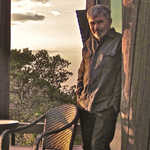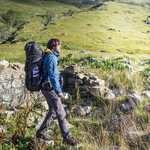

1990s: The Digital Revolution
December 7th, 2015, 9pm
It was 17°C with few clouds. The wind was calm.
The Evolution of the Photographic Posture: Part Four
In 1990s the biggest photographic revolution so far happened — the commercial introduction of digital cameras — which practically meant: unlimited picture taking and storing, instant image control and sharing. On the top of it they were moderately priced and advertised as cameras for everybody. Pretty much all camera manufacturers changed their production line from analog to digital, away from photochemical methods to pure digital technology within years. Image sensors and memory cards took over the previous task from physical film material. Now LCD-screens assist photographers by giving instant visual feedback. Hundreds of different digital cameras are introduced every year and sold in millions.
Ever increasing storage capacities of memory cards replaced almost all film material in the world in an instant of only a few years. Whole chemical industries, and with them their knowledge about the photographic process, dissapeared. Cause of memory cards there was no reason to be afraid about loosing any photographic opportunity anymore. The time of limited numbers of shots in single film magazines were finally over. No time to worry about film material or development costs as boundaries to your creative freedom anymore. Or did just that limitation force more awareness into the photographers eye? …
With the move to digital it completely changed the way how photography is approached by most people nowadays. From planed and to be beforehand imagined outcomes, calculated material costs and indispensable technological skills, everyone who feels creative enough and has a little budget to spend can became a photographer — just by try and error, by learning and doing. Making mistakes in the field of photography, and to improve on them, has never been so easy before.
The rules had changed. From now on digital cameras would show results immediately and young photographers would share their knowledge, photographs and experience in the World Wide Web for free. In contrast many old masters would keep their methods eminently secret. On the other hand, within hundreds of photographs being taken in a single shooting even less experienced photographers could assure themselves to have nailed the subject at least once. The sheer mass of photographs and mathematical probability would do it. Just imagine to be limited to only a few shots for your photographic endeavour only being able to survey your results some hours or days later.
With the raise of digital photography our bodies too started to raise into an upright straight position. Despite previous trends the distance between photographers eye and camera became further away again. Instead of small and dark viewfinders photographers are using now large screens implemented on the back of their digital cameras for composition, instant picture control and review. Therefore most digital cameras have to be hold with both hands in a distance of about 20-40cm away to give a good view on the self illuminated screens — a photographic posture we are all very familiar with nowadays.
Many old-school photographers couldn’t adapt to the new way of digital photography and went out of business. For others it was their chance to show the world their talent and be creative. But onother developement emerging from the field of digital post production changed the world of photography one time more.
With the introduction of Adobe Photoshop in February 1990 (first for Apple Macintosh only) image retouching and manipulation moved to a complete new level. Previously film negatives were seen as documents and possessed at court legal validity. They were used as pieces of evidence. With digital files being altered easily, trust into the “realness” of pictures almost vanished. With photoshop any visual image manipulation became possible.
In 1993 Canadian artist Jeff Wall took over a year to create “A Sudden Gust of Wind”, a digital composition of hundreds of photographs inspired by a wood-print from world famous Japanese artist Katsushika Hokusai. Over a period of five months Wall photographed actors in a landscape and collaged those photographs digitally together for his composition, the art work now owned by Tate Gallery in UK. Jeff Wall was one of the first artists to make heavy use of digital image manipulation in the photographic art world.
These days many people even expect photographers to manipulate final images according to their wishes like less wrinkles, brighter teeth, bigger breasts, longer legs, maybe another background, spouse, car — you name it. Image manipulation had become an implicitness.
Filed Under
Other moments in Vancouver
-
vancouver, Photos, my life in a sea of photos
Is this what we are? Our photos turn our lives into just a bunch of colours on somebody's infographic?
in Vancouver, Canada -
storytelling, pets
Eliza sat down to type a story
in Vancouver, Canada -
Food, Summer Night
These the happiest moments in the day
in Vancouver, Canada -
postcards, A new day, Happy Things
2016 is half way beginning!
in Vancouver, Canada -
summer, Ocean, happy place
The ocean has always been my happy place
in Vancouver, Canada -
Death, summer
Goodbye May
in Vancouver, Canada -
Travel, Writers, romance
For the rest of us, it’s a bit less romantic
in Vancouver, Canada -
Travel, Writers, Dating
Date A Girl Who Writes
in Vancouver, Canada -
Travel
Meditations on First Philosophy
in Vancouver, Canada


